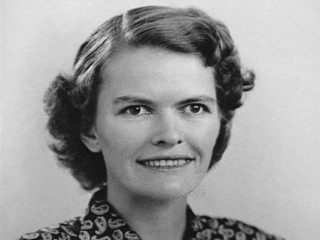
Julia Robinson biography
Date of birth : 1919-12-08
Date of death : 1985-07-30
Birthplace : St. Louis, Missouri, U.S.
Nationality : American
Category : Science and Technology
Last modified : 2011-08-24
Credited as : Mathematician, Hilbert's Tenth Problem,
Excelling in the field of mathematics, Julia Robinson was instrumental in solving Hilbert's tenth problem—to find an effective method for determining whether a given diophantine equation is solvable with integers. Over a period of two decades, she developed the framework on which the solution was constructed.
In recognition of her accomplishments, Julia Robinson became the first woman mathematician elected to the National Academy of Sciences, the first female president of the American Mathematical Society, and the first woman mathematician to receive a MacArthur Foundation Fellowship.
Robinson was born Julia Bowman on December 8, 1919, in St. Louis, Missouri. Her mother, Helen Hall Bowman, died two years later; Robinson and her older sister went to live with their grandmother near Phoenix, Arizona. The following year their father, Ralph Bowman, retired and joined them in Arizona after becoming disinterested in his machine tool and equipment business. He expected to support his children and his new wife, Edenia Kridelbaugh Bowman, with his savings. In 1925, her family moved to San Diego; three years later a third daughter was born.
At the age of nine, Robinson contracted scarlet fever, and the family was quarantined for a month. They celebrated the end of isolation by viewing their first talking motion picture. The celebration was premature, however, as Robinson soon developed rheumatic fever and was bedridden for a year. When she was well enough, she worked with a tutor for a year, covering the required curriculum for the fifth through eighth grades. She was fascinated by the tutor's claim that it had been proven that the square root of two could not be calculated to a point where the decimal began to repeat. Her interest in mathematics continued at San Diego High School; when she graduated with honors in mathematics and science, her parents gave her a slide rule that she treasured and named "Slippy."
At the age of sixteen, Robinson entered San Diego State College. She majored in mathematics and prepared for a teaching career, being aware of no other mathematics career choices. At the beginning of Robinson's sophomore year, her father found his savings depleted by the Depression and committed suicide. With help from her older sister and an aunt, Robinson remained in school. She transferred to the University of California, Berkeley, for her senior year and graduated in 1940.
At Berkeley, she found teachers and fellow students who shared her excitement about mathematics. In December of 1941, she married an assistant professor named Raphael Robinson. At that time she was a teaching assistant at Berkeley, having completed her master's degree in 1941. The following year, however, the school's nepotism rule prevented her from teaching in the mathematics department. Instead, she worked in the Berkeley Statistical Laboratory on military projects. She became pregnant but lost her baby; because of damage to Robinson's heart caused by the rheumatic fever, her doctor warned against future pregnancies. Her hopes of motherhood crushed, Robinson endured a period of depression that lasted until her husband rekindled her interest in mathematics.
In 1947 she embarked on a doctoral program under the direction of Alfred Tarski . In her dissertation, she proved the algorithmic unsolvability of the theory of the rational number field. Her Ph.D. was conferred in 1948. That same year, Tarski discussed an idea about diophantine equations (polynomial equations of several variables, with integer coefficients, whose solutions are to be integers) with Raphael Robinson, who shared it with his wife. By the time she realized it was directly related to the tenth problem on Hilbert's list, she was too involved in the topic to be intimidated by its stature. For the next twenty-two years she attacked various aspects of the problem, building a foundation on which Yuri Matijasevic proved in 1970 that the desired general method for determining solvability does not exist. While working at the RAND Corporation in 1949 and 1950, Robinson developed an iterative solution for the value of a finite two-person zero-sum game. Her only contribution to game theory is still considered a fundamental theorem in the field.
Robinson's heart damage was surgically repaired in 1961, but her health remained impaired. Her fame from the Hilbert problem solution resulted in her appointment as a full professor at Berkeley in 1976, although she was expected to carry only one-fourth of the normal teaching load. Eight years later she developed leukemia and died on July 30, 1985.
















